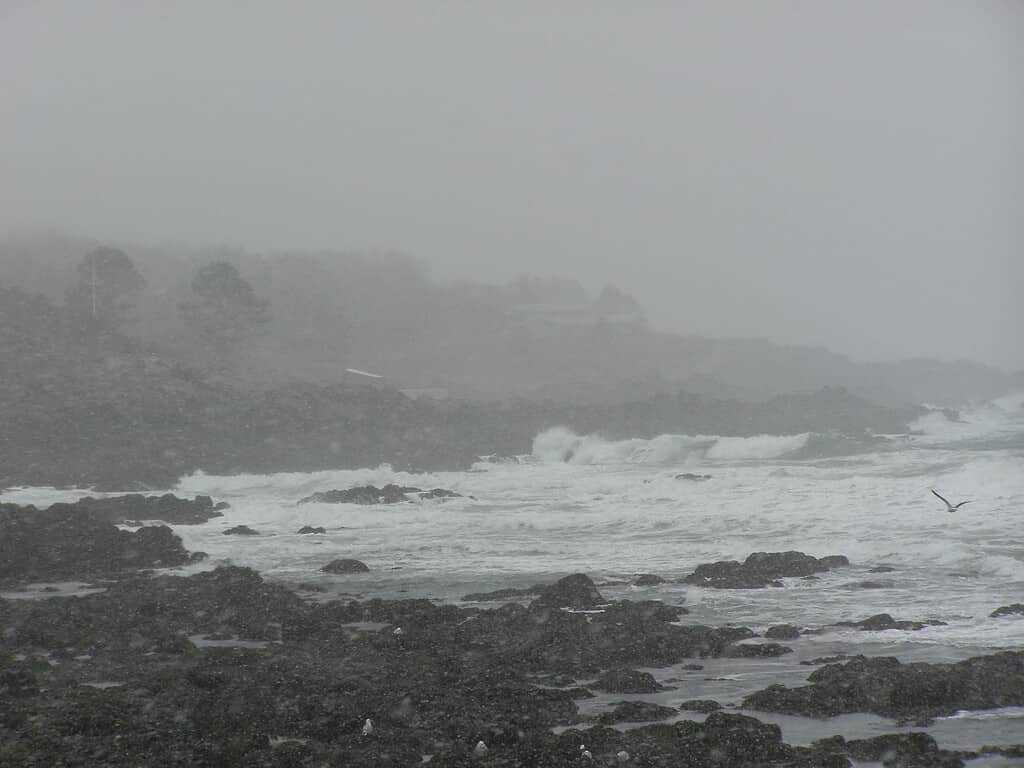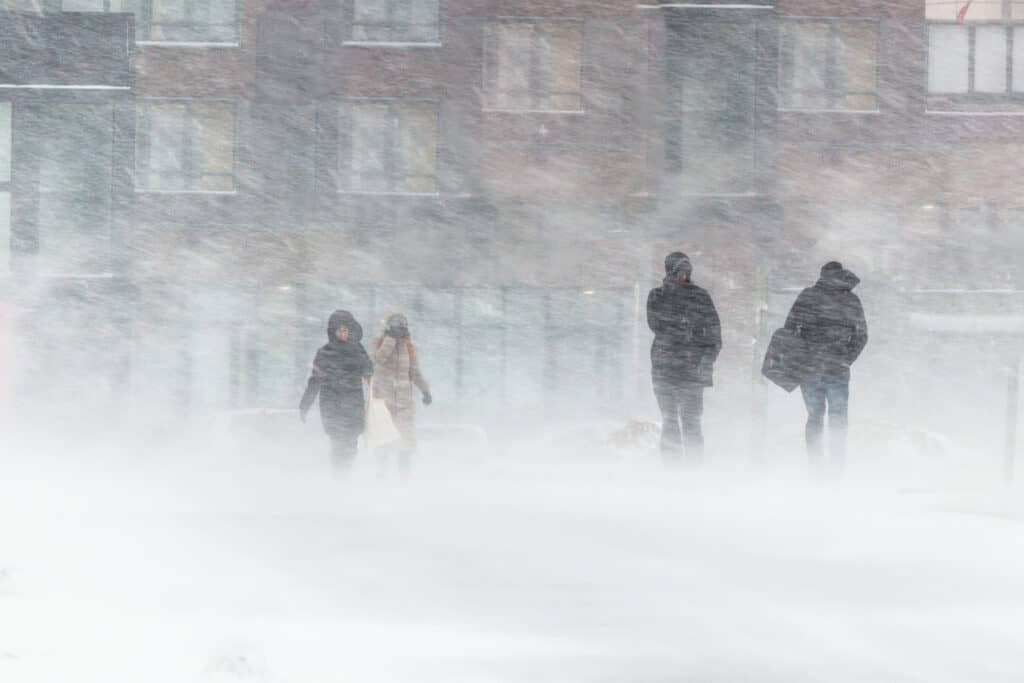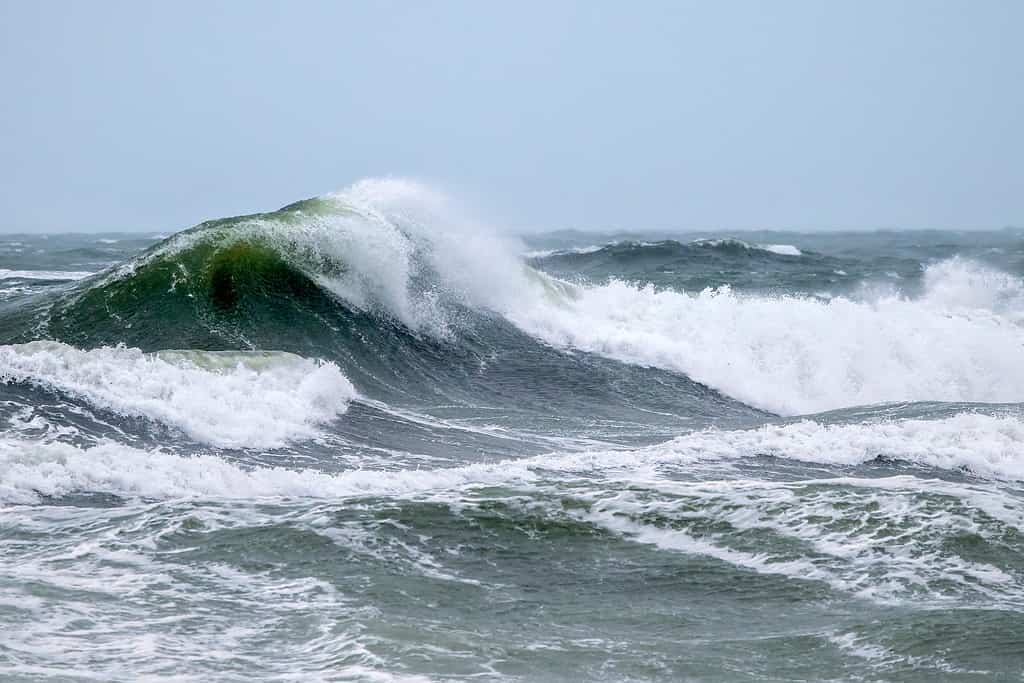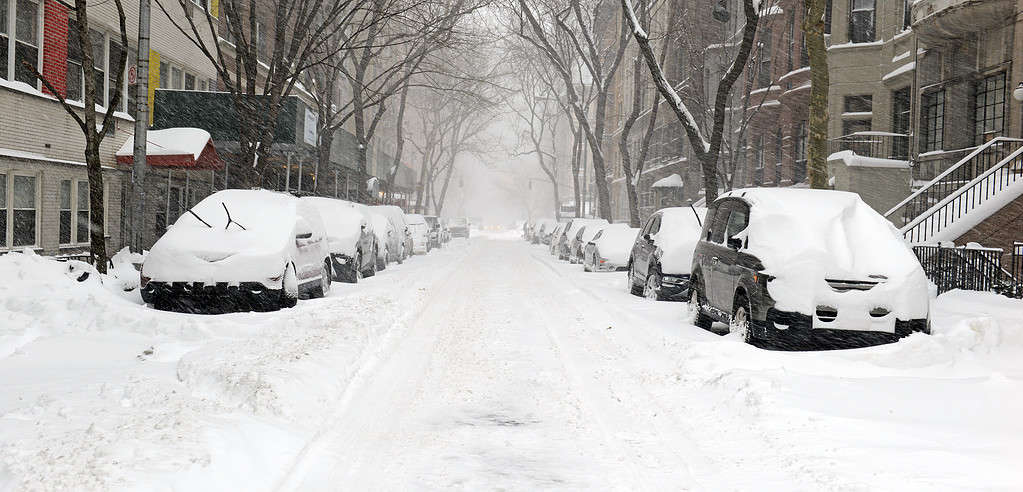A Nor’easter is a storm along the East Coast of North America. The name derives from the winds over the coastal area, which typically blow from the northeast. While these storms can occur throughout the year, the most common and strongest Nor’easters occur between September and April.
Nor’easters are more violent during the winter because the convergence of air masses energizes the storms. Cold polar air and the warmer Atlantic Ocean air crash together. The greater the temperature difference between those air masses, the stronger the storm will likely be.

The Atlantic can turn violent in a Nor’easter.
©iStock.com/DepthofField
Strongest Nor’easter Ever Recorded
The Ash Wednesday Storm of 1962 is the strong nor’easter on record. According to the U.S. Geological Survey, this nor-easter was “the largest East Coast winter storm in terms of land loss and number of homes damaged or destroyed.”
The storm reached the mid-Atlantic coast on Tuesday, March 6, 1962. While most nor’easters are fast-moving storms, this mammoth nor’easter remained in place for three days. The winds whipped at 60 miles per hour, and huge waves pounded the coast. Sea walls and protective dunes were destroyed.
New Jersey sustained the worst damage of the six states impacted by the storm. Bridges were destroyed, and the National Guard was mobilized to rescue people stranded by the storm, such as residents of New Jersey’s barrier islands.
Every high tide brought more destruction. Homes were washed away. Roads were destroyed. Atlantic City was hammered with 25-foot waves. All told, New Jersey sustained $130 million in damage from the storm. That is equal to over $1.2 billion today.
As with most powerful nor’easters, inland areas were buried in snow. Near-blizzard conditions hit North Carolina and parts of Virginia. Winchester, Virginia, set a one-day snowfall record when it received 23 inches. The Blue Ridge Mountains of western Virginia received 3.5 feet of snow. This monster storm dropped snow as far south as Alabama.
While the storm was originally labled the Great Atlantic Storm, it came to be knowns as the Ash Wednesday Storm since the worst of the storm fell on the Christian holy day in 1962.

Nor’easters can produce blizzard conditions further inland.
©justoomm/Shutterstock.com
When Will We See the Next Nor’Easter?
The next nor’easter appears to be set up for Tuesday, March 14, 2023. The storm developed in California and passed over the northern Rockies. It is currently moving into the Great Plains. Blizzard conditions are expected in Montana, North Dakota, and Minnesota this weekend.

The waves in a late winter Nor’Easter, such as this one in Salisbury, Massachusetts, can wreak havoc on the New England coast.
©iStock.com/Christopher R Mazza
When it reaches the Atlantic coast on Monday and Tuesday, it is expected to clash with warm air off the Atlantic and a classic nor’easter could potentially result. Winds of 50 miles per hour are expected in coastal areas. As a result, coastal flooding could be seen in New England at high tide, and huge snowfall totals could pile up further inland.
The track of the storm is still undetermined. It’s just too far out to make precise predictions. But, as of right now, it seems that all the elements of a classic nor’easter are coming together.

Snow could blanket the northeast early next week, such as this scene from Manhattan, New York, during a Nor’easter.
©nyker/Shutterstock.com
The photo featured at the top of this post is © iStock.com/kevinmwalsh
Thank you for reading! Have some feedback for us? Contact the AZ Animals editorial team.







